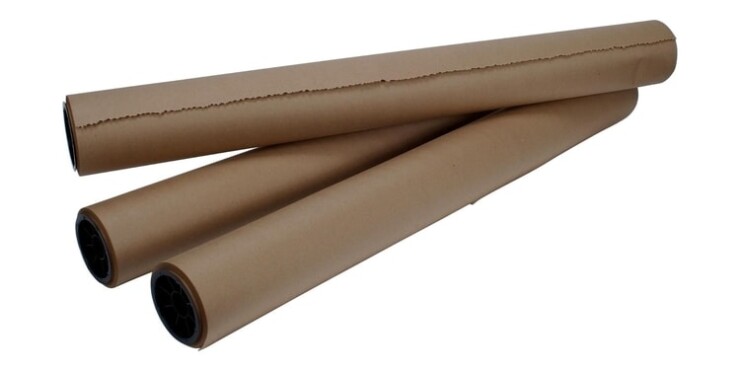Parchment paper and butcher paper are among the most commonly used papers in food handling, preparation, as well as cooking.
Before you decide on what paper to buy for your kitchen activities, it is important to understand each of them first as they both have their pros and cons. In most cases, parchment paper and butcher paper are used for baking and roasting.
While the two papers may be confusing, they have a lot of differences. In this article, we will demystify their similarities, differences as well as when to use each. Here we go:
What Are the Similarities Between Parchment Paper and Butcher Paper?
Both the parchment and butcher paper can handle very high temperatures. The butcher paper for instance can withstand temperatures beyond 420°F.
This is also the case with a parchment paper that can withstand temperatures up to 450°F. Beyond these temperatures, both papers will burn.
Another very common similarity between the parchment paper lies in how they are produced. Both are produced using paper pulps. Also, both papers are either unbleached or bleached with chlorine.
What Are the Differences Between Parchment Paper and Butcher Paper?
Though these papers are somehow similar, they have several differences as well. Thus, you might want to use each for different kitchen purposes.
The difference between the two papers is mainly seen in their make and chemical used. The chemicals used in the construction of butcher paper are sulfide, paper pulp, and caustic soda.
These chemicals make the paper strong with a higher density. On the other hand, most parchment papers use sulfuric acid, silicone, and paper pulp.
The silicone properties make this paper moist-resistant, non-stick, grease-resistant, and heatproof. While parchment paper in non-stick, butcher paper does not prevent food from sticking into it.
Therefore, you cannot use butcher paper for preparing foods that are not dry. Another difference is seen in their tear resistance.
Butcher paper bears more resistant to wear and tear, especially when used for dry foods. However, parchment paper does not last for long and cannot be reused or recycled like the butcher paper.
Finally, butcher paper comes in multiple color options while the parchment has only a single color (brown) but it becomes white when beached.
Butcher Paper Uses
For many years, butcher paper has mainly been used for wrapping and cooking meat and fish. Although it is not suitable to use butcher paper directly on high flames, it is great for smoking meat.
Today, butcher paper is also used in many applications such as art and craft and packing sensitive and fragile things like glass and chinaware. You can also use butcher paper for starting a fire on charcoal and wood pieces.
Advantages
- It is heat resistant
- Relatively cheap
- It available in both sheet and rolls
- Strong with high tear resistance
Disadvantages
- Not suitable for wet foods and
- Not non-sticky
- Can be poisonous when used to prepare some foods
- Not Grease-resistant
Parchment Paper Uses
Parchment paper is among the common materials you will find in the kitchen. This is due to their moisture and heat resistant, cellulose-based material, and non-sticky properties.
Parchment paper is usually white (bleached) or brown (unbleached), sheets or rolls, or even pre-cut circles for cake pans. It is used when baking cookies, granola, and pastries and you don’t want them sticking to the pan.
It also used to at the bottom of the cake and quick bread for perfect baking. It is the best for cooking fish, vegetables, and bake food in small parcels.
Advantages
- Even Baking: Many pans have different heating properties. Some can spread heat evenly while others do not. Using a parchment paper will ensure even heating despite the quality of pan you will be using
- No Undesirable Spreading: Parchment paper will give the cake or cookie dough something to hold on and thus reducing undesirable spreading.
- Non-Sticking: Lining your pan with parchment will ensure that your cookie or cakes do not stick to the pan.
- Easy Cleaning: Sometimes cakes and cookies can stick to the pan making cleaning them stressful. Parchment paper will make cleaning pans very easy.
- Insulation: Using parchment paper to wrap your meat or fish will create a steam pocket that will reduce the chances of overcooking and also your fish will be soft and moist.
Disadvantages
- Using parchment on pans is expensive as compared to butcher paper
- Not strong as compared to butcher paper
- No color variation
- parchment paper cannot be recycled
Bottom Line on butcher paper vs parchment paper
Both butcher and parchment paper are useful in the kitchen for food preparation. Many people use them as they are of good quality. Mostly, people use butcher paper for cooking meat and fish, and parchment paper for baking. So, each paper is handy depending on your needs.

